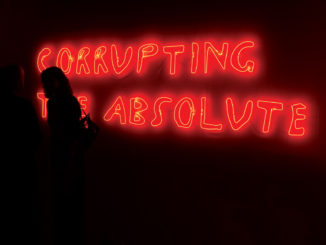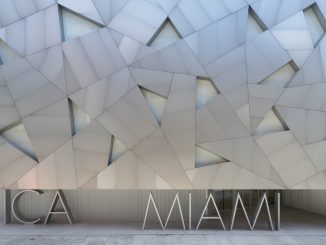
What really is the place of alternative, non-commercial (which often translates to artist-run) spaces in a cultural community? The community’s history and sophistication play a part in such a determination – but in the end it’s the living, breathing participants themselves that make or break an alt scene.
Just like the city itself, the cultural scene in Miami is fairly young, with young institutions including the museums and schools. But it grew up quickly this century, after the arrival of Art Basel Miami Beach and all the repercussions the fair has had, good and bad. Yet, it is at this critical juncture that many people feel alt spaces are fundamentally important, as they can help foster creativity and experimentation at a time when the commercial is king.
In just a short ten-year span, Miami has birthed some spaces that have left remarkable imprints on the local art scene; and watched them fade or die, only to see new ones pop up, although never really in the same mold. One thread is common: they are generally short-lived spaces because they take so much blood, sweat, and tears to run, with the only real “pay” being personal fulfillment.
Step back to 1997, when four young artists opened Box. “We were upset over the difficulty of getting a show in town,” recalls one of the founding artists, Leyden Rodriguez-Casanova. “So we decided to do it ourselves.” Although Miami at that time had far fewer commercial galleries than today, the Box people saw a hole that needed to be filled. “We wanted a space for experimentation; a space where the prospect of selling was nowhere to contaminate the integrity of the ideas being shared. We wanted an independent space. Independent from a board of trustees, government funding, bureaucratic bullshit, just a place of ideas.” But eventually the time and money needed to run a space proved too much, and Box eventually closed for good in 2003. But by that time, other spots had started to fill the gap as well. “The House and Locust Projects were getting lots of support,” says Rodriguez-Casanova, who now is with the David Castillo Gallery. “They were getting support from the community, the state, collectors with plenty of money, so it was time.”
The House: Along with its next incarnation, Placemaker, this artist-run space will probably be the most prominent in Miami’s memory. Started by a number of artists in a run-down old house in Edgewater, the founders are now some of the local scene’s most mentioned, a.k.a Daniel Arsham, Bhakti Baxter, and Martin Oppel among others. The House’s demise came from a wrecking ball, as downtown neighborhoods were leveled to make room for the condo boom. But The House and Placemaker – also now disappeared – left visible marks on the art ground.
Locust Projects, founded by artists Cooper, Weston Charles, and Elisabeth Withstandley, however, is still with us and thriving, although its set-up differed in significant ways from other artist-run spaces. First off, it has a huge list on its board of directors, and now has a full-time professional director. Over the years, the Locust space – one of the first to open up in the now-desirable Wynwood – has let amazingly creative and experimental endeavors sprout from its walls.
Two show-stoppers back at Box were artists Naomi Fisher and Hernan Bas, who, founded The Bas Fisher Invitational art space in the wake of losing their favorite alternative art space ‘the House’ to Miami’s rapid gentrification; just to end up maintaining their new space in one of the most gentrified areas in Miami, the Design District. Their premise is to invite artists who they are inspired by to publicly showcase their work” According to Fisher, theirs has been a very hands-off approach. “We just want to help providing a space for people to really do absolutely whatever they want… “We don’t have any intention of having the structure of a commercial gallery, we are simply a space. Thus if an artist sell their work, we take zero percentage of the sale.” Back to the money: the lack of it is what can make an alternative space free to show whatever it wants, commercial viability be damned. The lack of it can also be such a literal drain on its founders that it becomes too much.
Chilean artist Eugenia Vargas tried to keep overhead down with her “Home” shows, as she presented them in the living room, dining room, and bathroom of her house north of 79th Street. Her 1998 “Home Show” included many of the artists listed above, and also featured Beatriz Monteavaro, Gavin Perry, Robert Flynn, and herself. But says Vargas, “it was less about exposure for artists and more about building a community, echoing many others who have hosted such exhibits”. “Miami”, she explains, “is so fragmented, ideologically and politically, and that affects the art world as well.” So she invited a diverse group of artists to come hang their works in her home, “to do something collective. It makes you part of a community, and that is so important.” Rodriguez-Casanova concurs: “It is about a sense of community – working with other artists. This can help you develop your work and create opportunities for yourself as well.” But Vargas too had to move on to less logistically intensive projects, such as her current radio performance piece, where she interviews people at art events and it airs on the frequency 1610 am. But the principle is the same, she says. “I want art to be inclusive, not to be elitist. A back and forth dialogue (that artist-run spaces can create) is so important, and it brings much-needed energy.”
Ditto, says Dominican-born artist Charo Oquet, who opened up a huge non-profit exhibition space in Wynwood, Edge Zones, which is still up and running. “The place of non-commercial spaces in the art community is the platform for growth, openness, democracy, and cross pollination. Without places where people can gather and talk and exchange ideas there is no growth.” Hers is another formula to avoid utter bankruptcy in running a place such as Edge Zones. “We had a building but no money,” explains Oquet. “So we (along with David Vardi) asked artists to pitch in with money, work and all of us made it happened … it was a space which has benefited many and has been created by the efforts of countless artists. This is an artists place.” Interestingly, while many artists feel a lack of alternative spaces today is a problem for Miami, Oquet adds this: “The question is, more of what? I think we need to not spread our resources too thin because we need to fund the spaces we have now that are here and keep them going. You run the risk of anyone who thinks they can do this … putting a non-profit together and going for the funding, but many times they are not doing much.”
Or maybe an alt art space functions a little differently today, like at the Twenty Twenty gallery in the gritty south end of Wynwood. Traditionally, a non-commercial space was viewed as a place to see relatively unknown artists, where new artists could test the ground. But Twenty Twenty’s much acclaimed recent shows included works from Tom Scicluna, and Nick Lobo, well-respected but certainly not invisible artists. In this case, the alternative space becomes more of a place where already established artists can break away from the commercial aspects of their artistic lives and be able to experiment once again.
Another interesting aspect about the art scene in Miami is that young artists may have no real need for little alt galleries. Many young artists are prematurely getting shows almost straight out of school and the most notorious are getting lots of support from local art patrons. Therefore, their career perspectives may get distorted and their initiatives truncated before even becoming established. But in the end of the day, we want non-commercial artist-run spaces, and Miami desperately needs a Contemporary Art Center allowing artists to produce and exhibit using public funds. Then, perhaps, artists will be geared towards breaking free from the “commercial”, allowing their art productions to truly blossom. And Miami to blossom too.



Be the first to comment